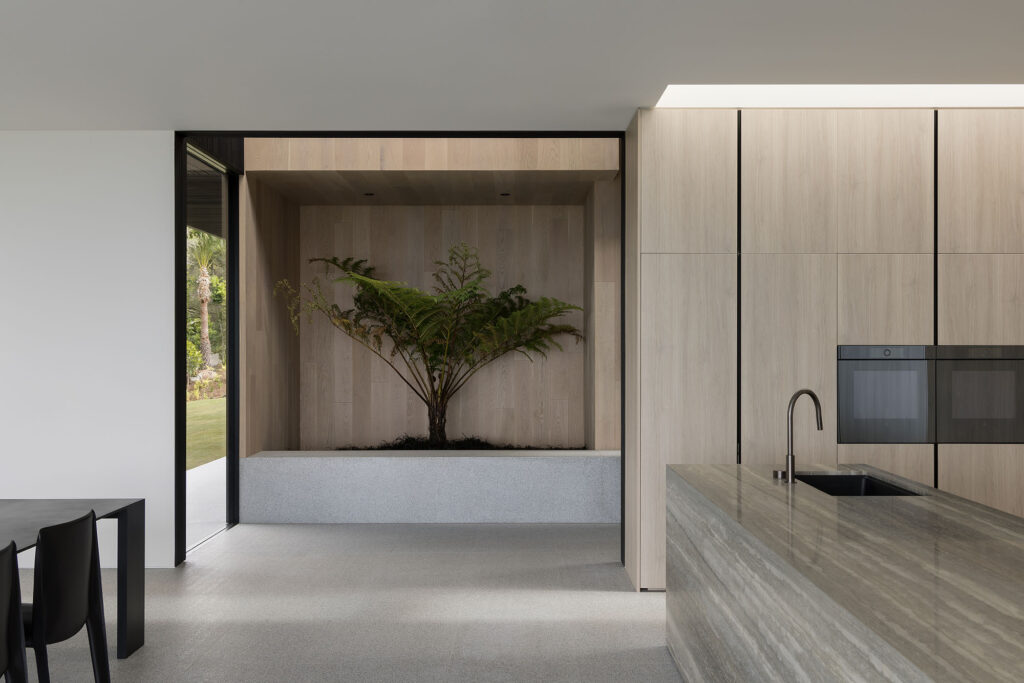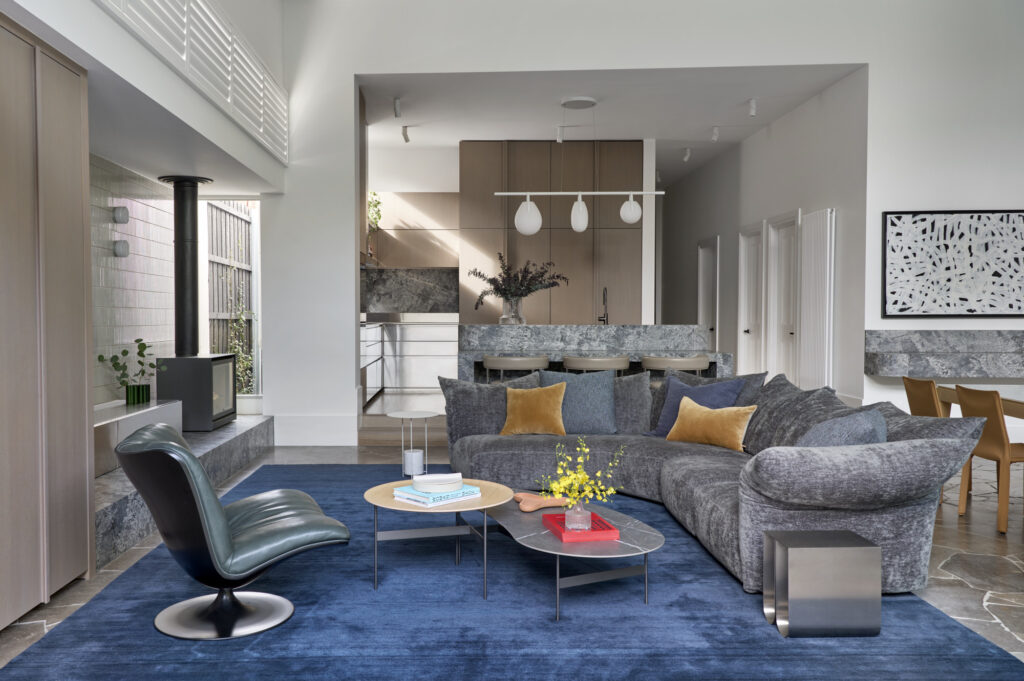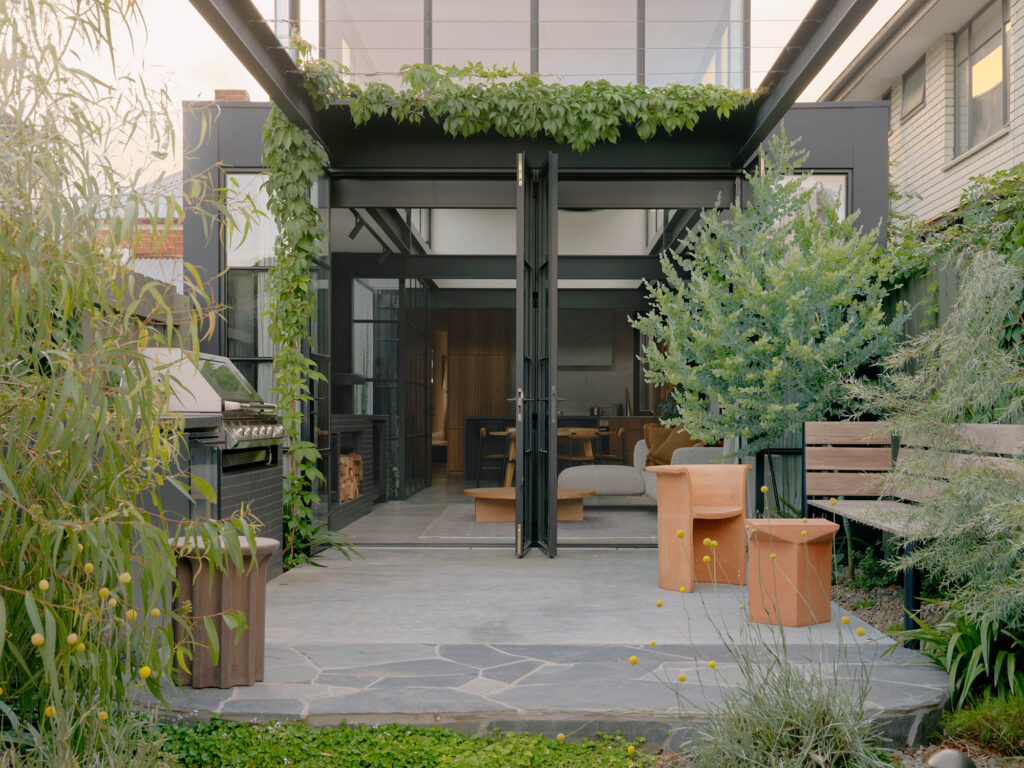Words by Alice Blackwood
Photography by Shannon McGrath
Interior Design by Hecker Guthrie
Architecture by Woods Bagot
I recently hosted a panel discussion for Melbourne Design Week titled The Changing Face of Fitzroy, exploring how this iconic suburb continues to evolve without losing its soul. Our panellists spoke to the rich contrasts that define Fitzroy’s enduring appeal: heritage interwoven with progress, creative grit sitting comfortably alongside big-brand polish, and a community made up of locals, visitors, and workers.
This layered identity set the tone for our conversation and offered a natural entry point into The StandardX – Fitzroy’s newest hotel destination. The design manager at The StandardX (and one of our esteemed panellists), James Cameron, explained that establishing a boutique hotel in a neighbourhood like Fitzroy demands a deep sensitivity to place and the people who move through it. The hotel’s guests reflect the diversity of the suburb itself: clued-in locals, loyal lobby-loving hot-deskers, and travellers seeking a quintessential Fitzroy experience. For a brand like The StandardX, known for its instinctive grasp of cultural undercurrents, designing for Fitzroy meant not only observing the neighbourhood, but absorbing it – and letting that attitude carry through into every corner of the hotel’s design.
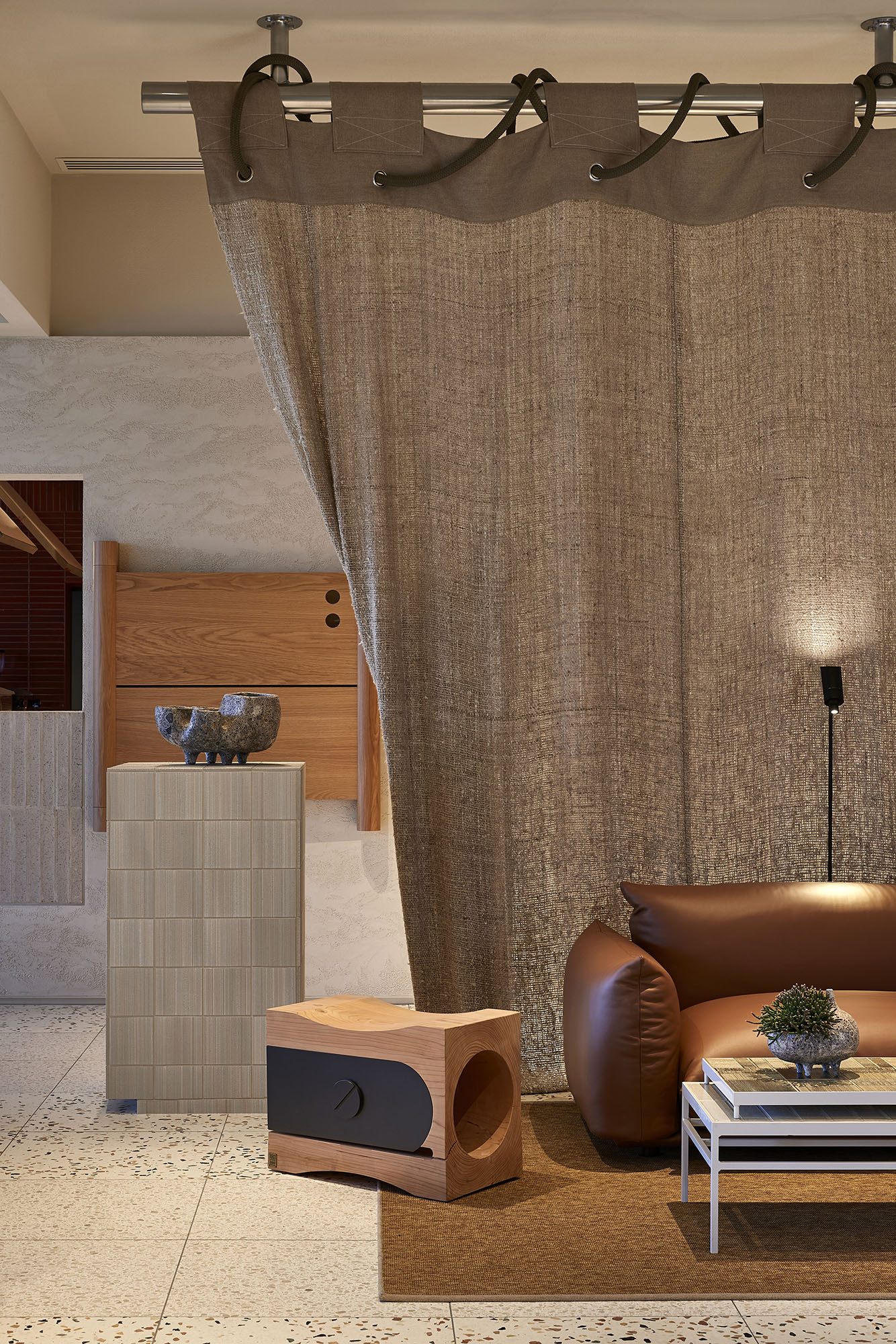
Hecker Guthrie carried out the interior design of the hotel, conducting extensive research into the suburb’s long-storied history to conceptualise a design narrative that balances industry with craft, and domesticity with moments of hotel glamour.
“Fitzroy was a real working-class neighbourhood back in the day,” says Josh Watt, associate at Hecker Guthrie. “There was lots of industry, such as brickworks and the steel works; there was this real production happening here. And then fast forward to the current scene, there’s this strong hospitality scene that Fitzroy has, and also that layer of arts and crafts,” he says.
“We looked to the historic production and current craft to underpin the narrative and storytelling. That was our starting point,” says Josh, who built a conceptual narrative that caught the attention of The StandardX. He continued to work with The StandardX, weaving the hotel’s “cheeky, urban sensibility” into the design.
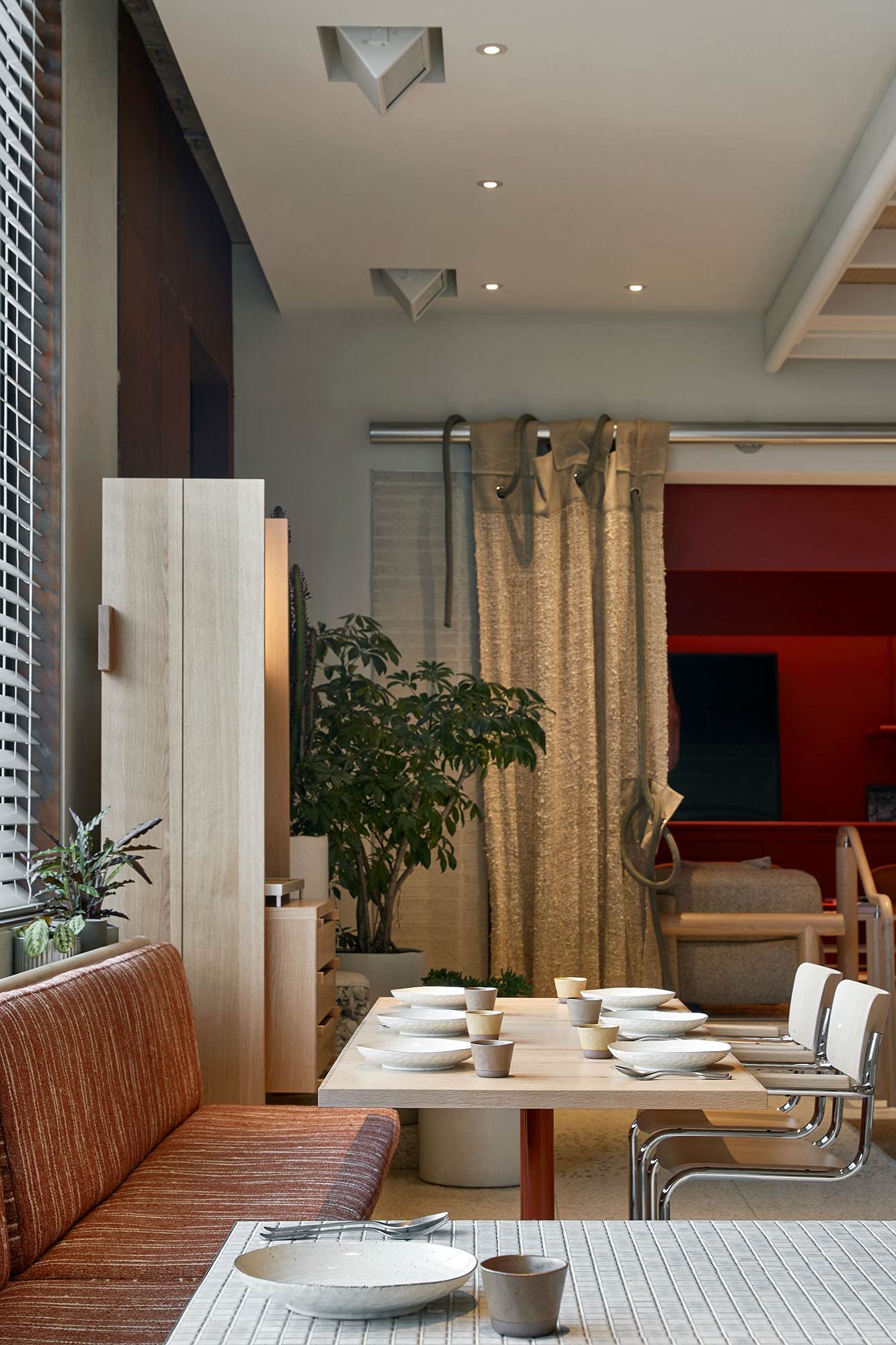
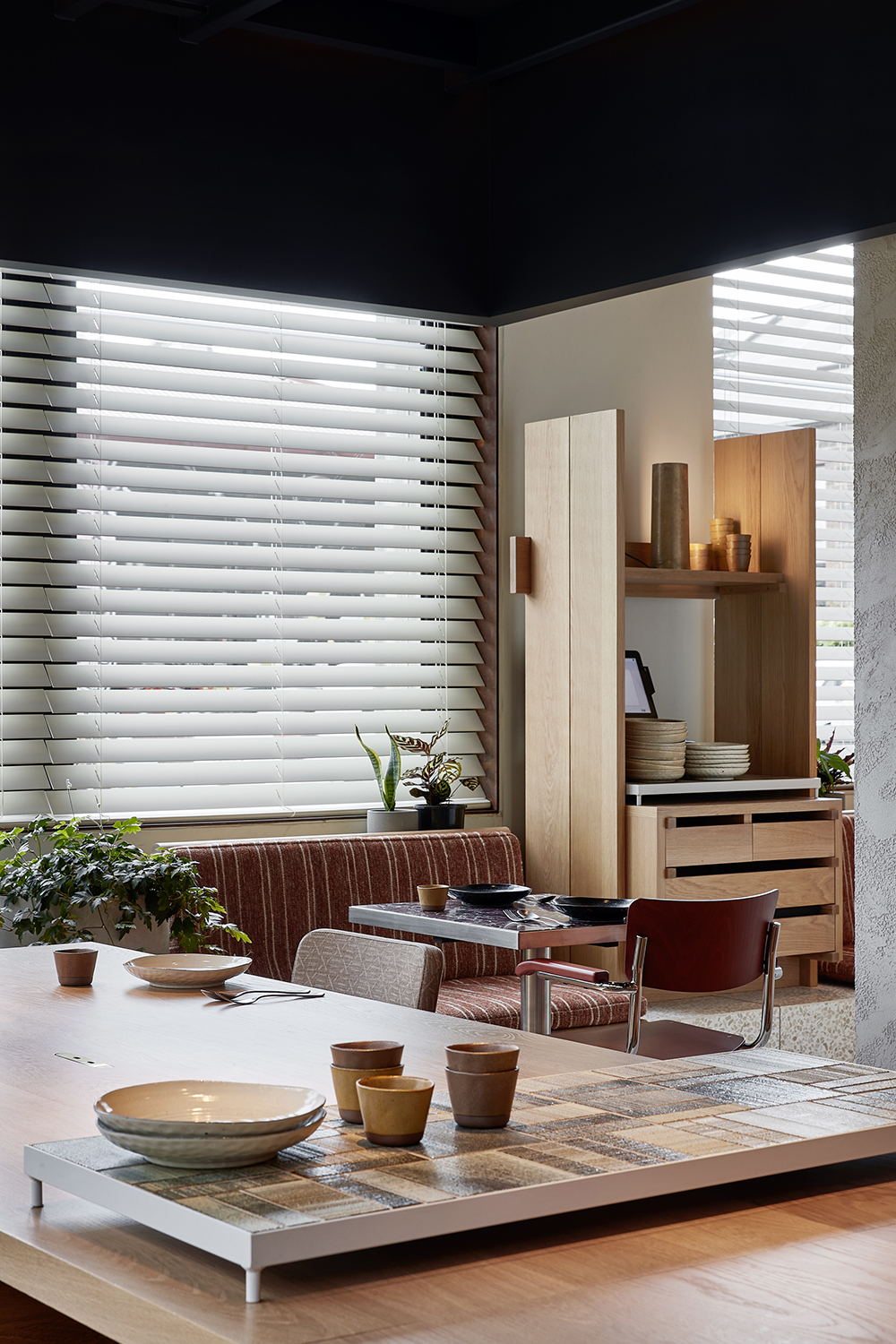
This cultural-contextual fusion is clearly present in the hotel’s ground plane – an open-plan layout that brings together hotel check-in, a lounge, restaurant, bar and cocktail lounge. Hecker Guthrie approached the design with a focus on calm and cohesion, shaping the environment to support the layered rhythms of waiting, eating, drinking, and working.
“There was a number of design ideas that we incorporated to break the space down and to create moments of surprise, intimacy and drama,” says Josh, pointing to red powder coated Dexion steel shelving, inlaid with timber – an elevated palette racking system that cleverly breaks up, divides and screens the space. These also offer The StandardX team ample space for styling and setting the vibe with curated designs, art and objects – often locally sourced.

“Ginormous curtains” bound to ceiling rails with giant macrame loops (artist Sarah Parkes), are pulled back in a theatrical manner – left semi-open to allow for views through to neighbouring spaces. The tactile and handmade dwells in every element of the fit-out where Hecker Guthrie has used Artedomus’ Japanese-designed INAX tiles to blend craft into the story of the hotel and the visitor journey.
Visible within every tile is its artisanal fabrication and these can be seen around the bar, clad in deep red-toned Arute Jiki Border tiles, and featured as centrepieces on many of the tables and waiter’s stations. Here, Hecker Guthrie has designed a series of steel trays to frame the tiles, which elevate and break up the shared surface of huge Oak timber tables. “There is a real calmness and craft to the Artedomus tiles that isn’t overwhelming,” reflects Josh.
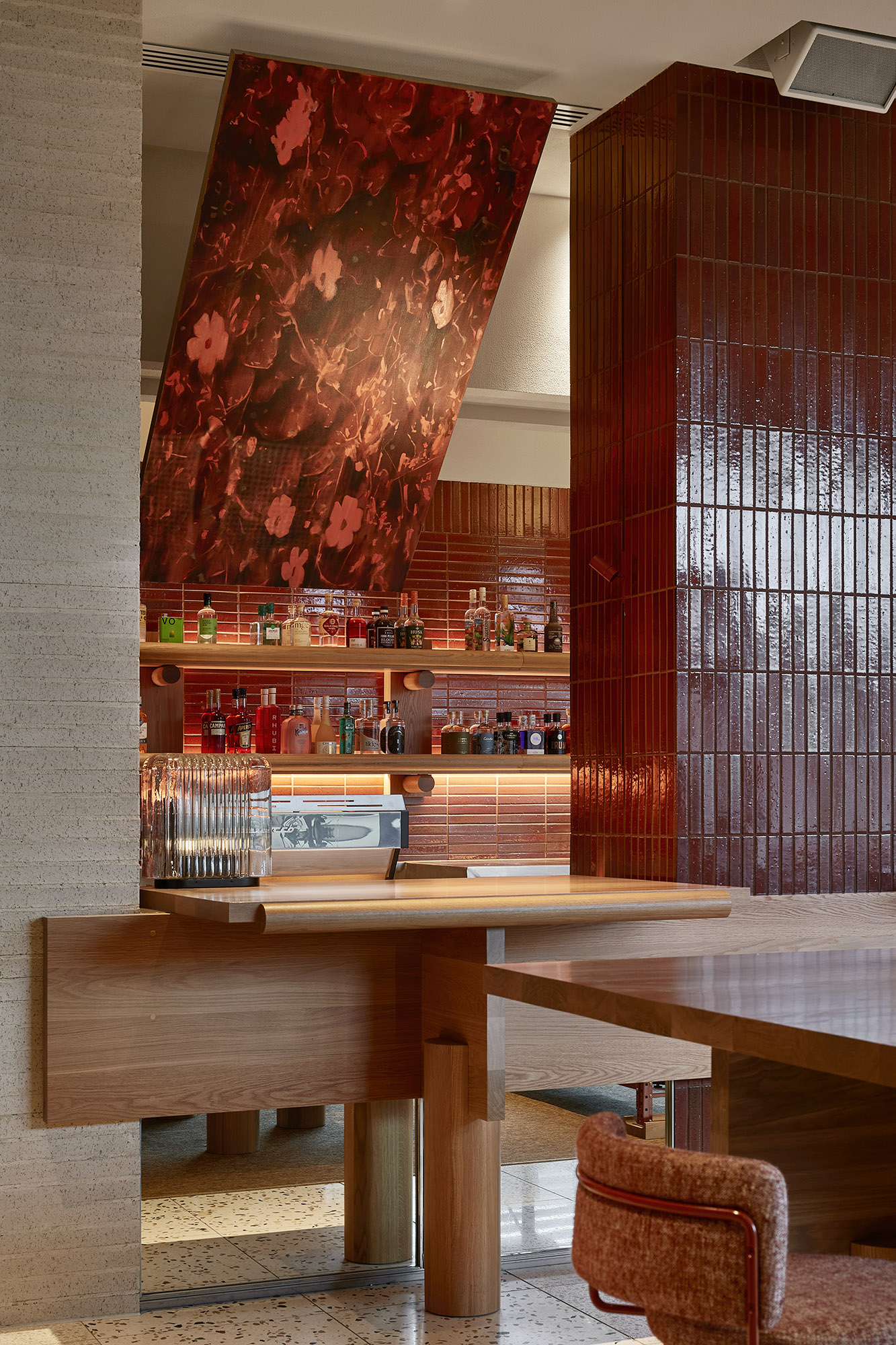

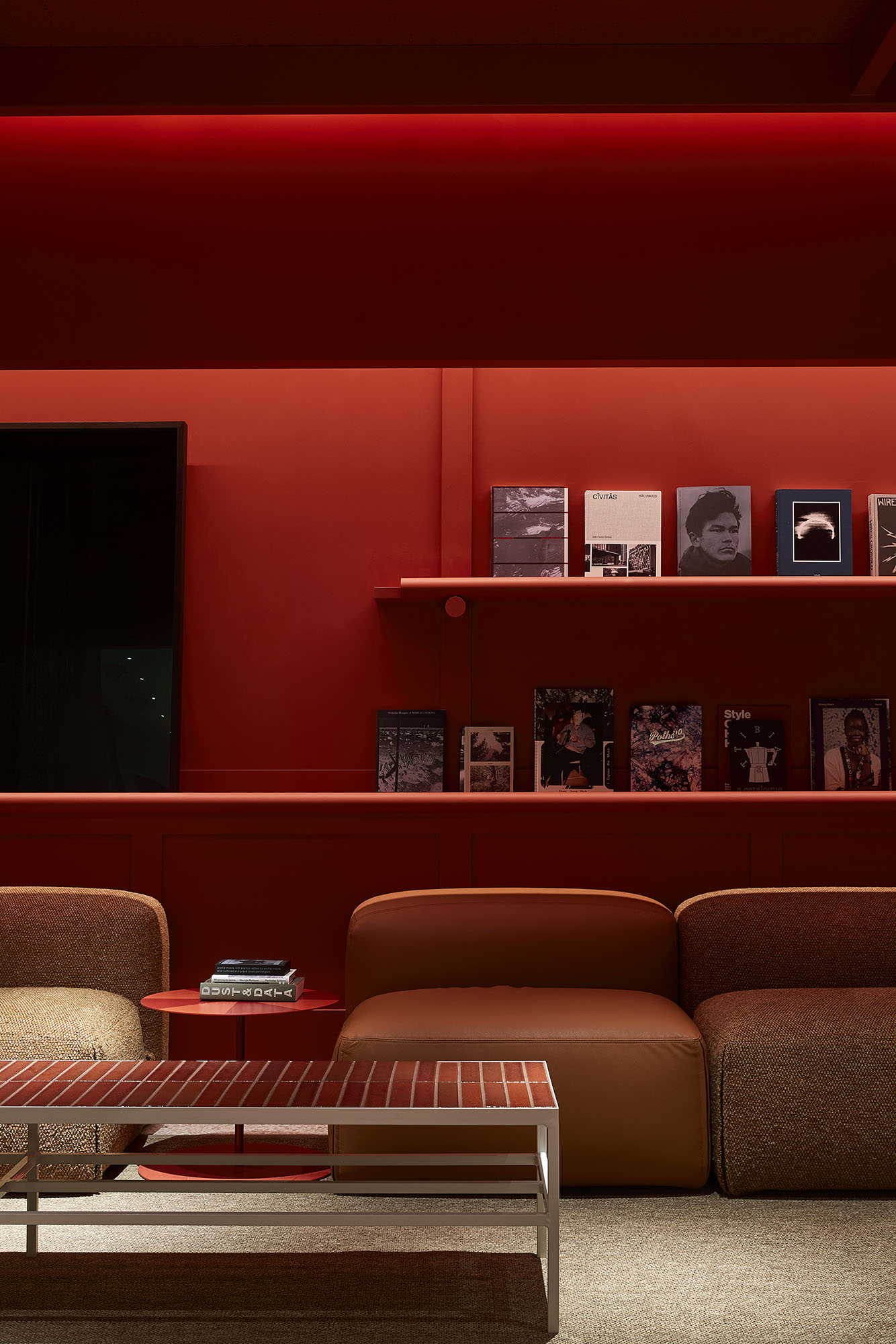
The hotel also sports a rooftop bar and restaurant – an oasis of greenery and sky punctuated by rusty red Corten steel furnishings and the soft, playful touch of fringed umbrellas and seat cushions. For the rooftop bar Hecker Guthrie has designed a custom mosaic feature, inlaid into the table tops and water station around the kitchen. The gridded design of the mosaic, abstracted from an aerial photograph of Fitzroy, is expressed through a tessellation of INAX Biyusai tiles.
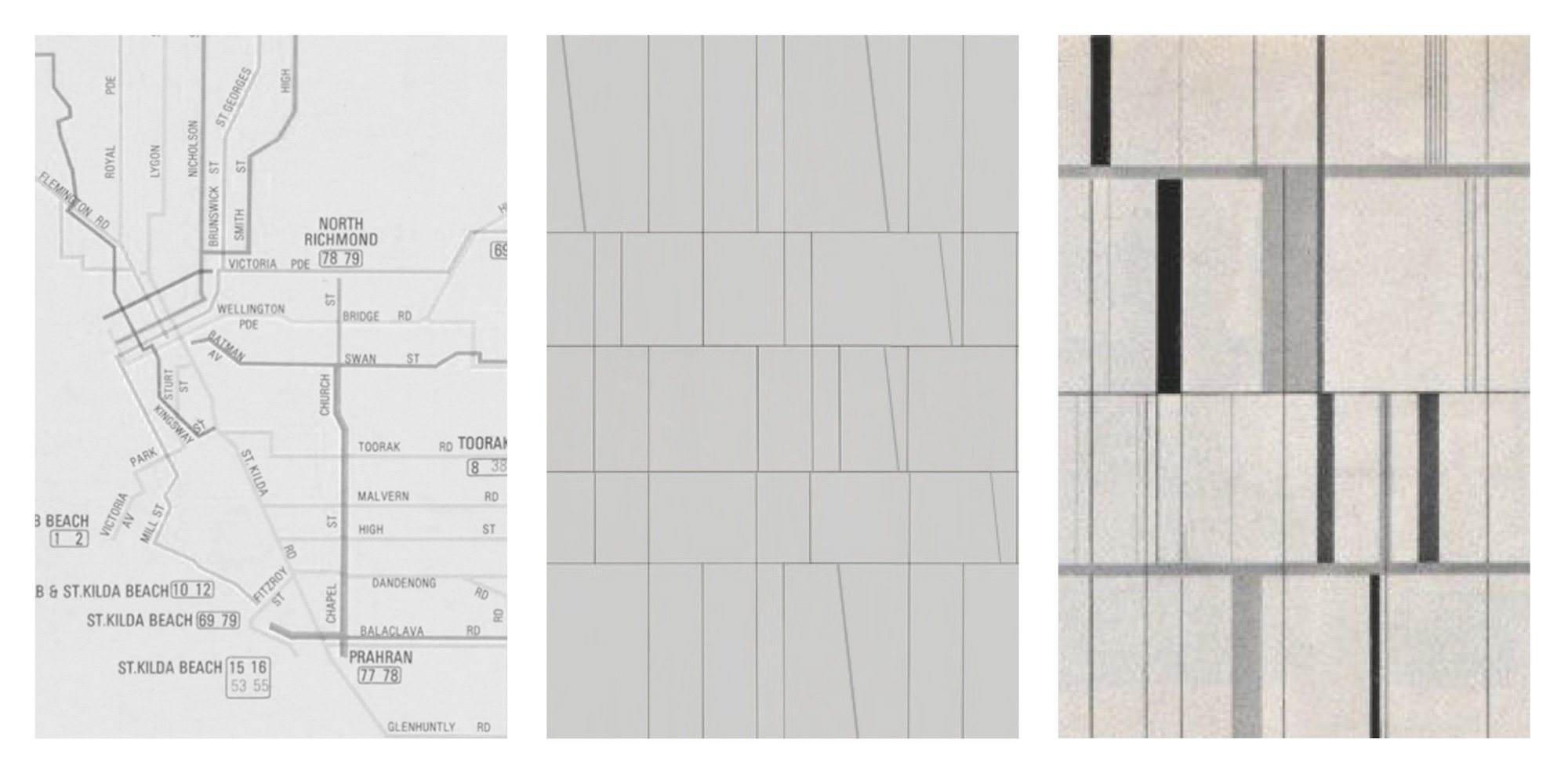

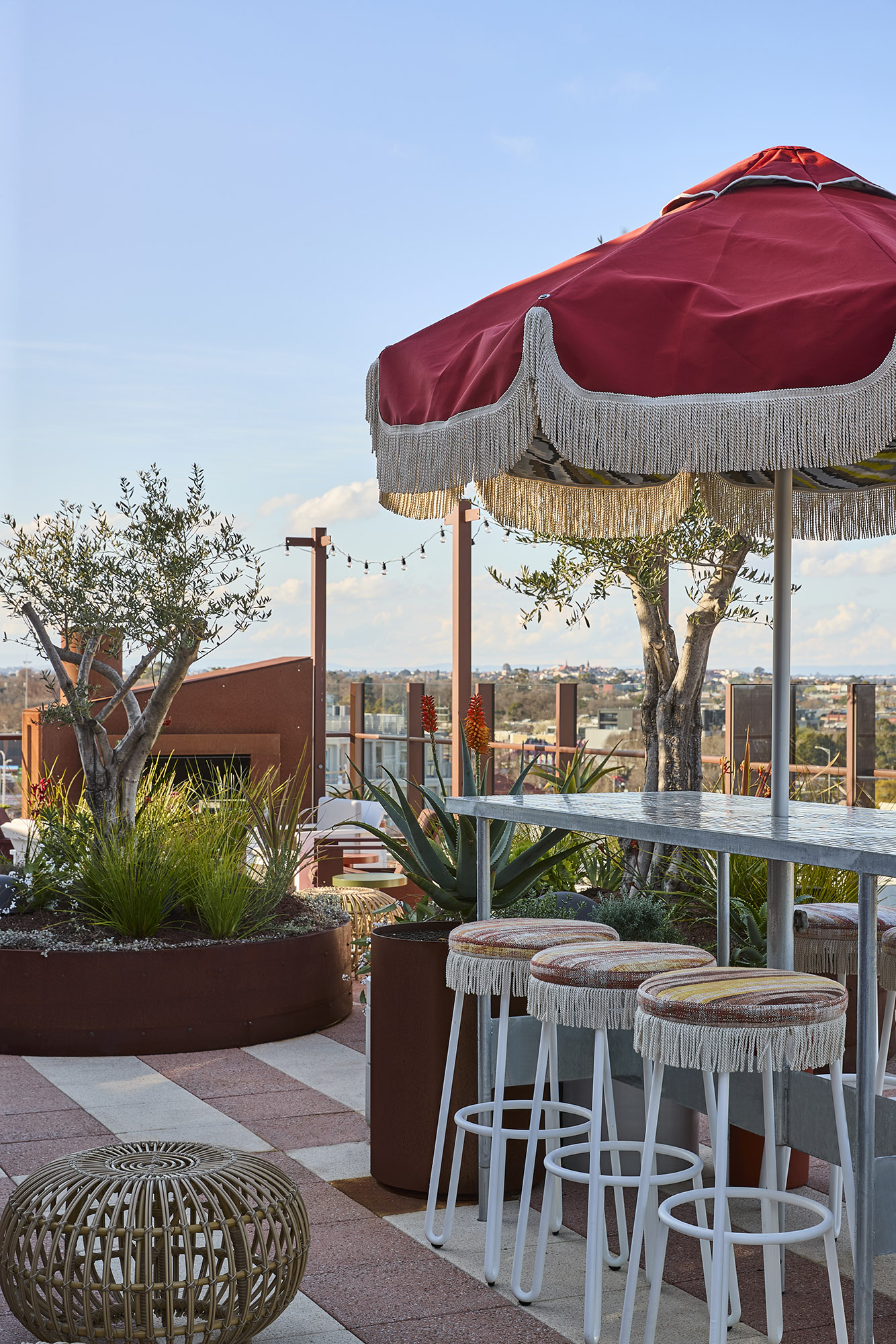
James, once a Fitzroy local and now the design manager at The StandardX, brings an insider’s understanding of the suburb’s spirit, and embeds that sensibility into every layer of the hotel. Step past the large, red revolving door on Rose Street, and you enter more than a hotel – you cross into a crafted reflection of Fitzroy itself: textured, creative, full of contrast and character. As Josh says: “There’s a story and narrative in almost every surface.”
—
The Changing Face of Fitzroy presented by Studio Tate at Melbourne Design Week featured panellists James Cameron (The StandardX), Liz Ride (Studio Tate), and Nick Jumara (Right Angle).
